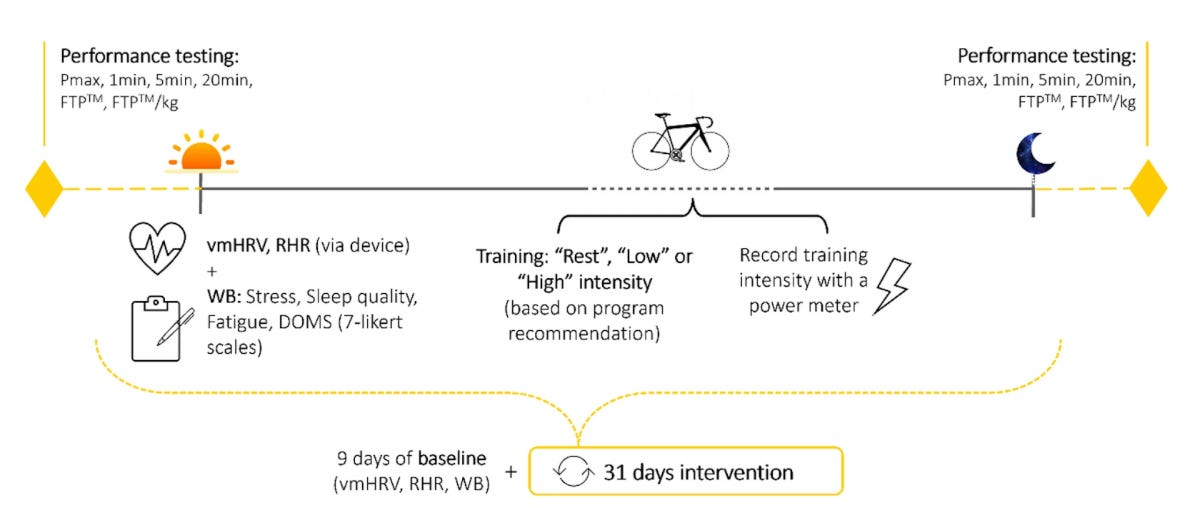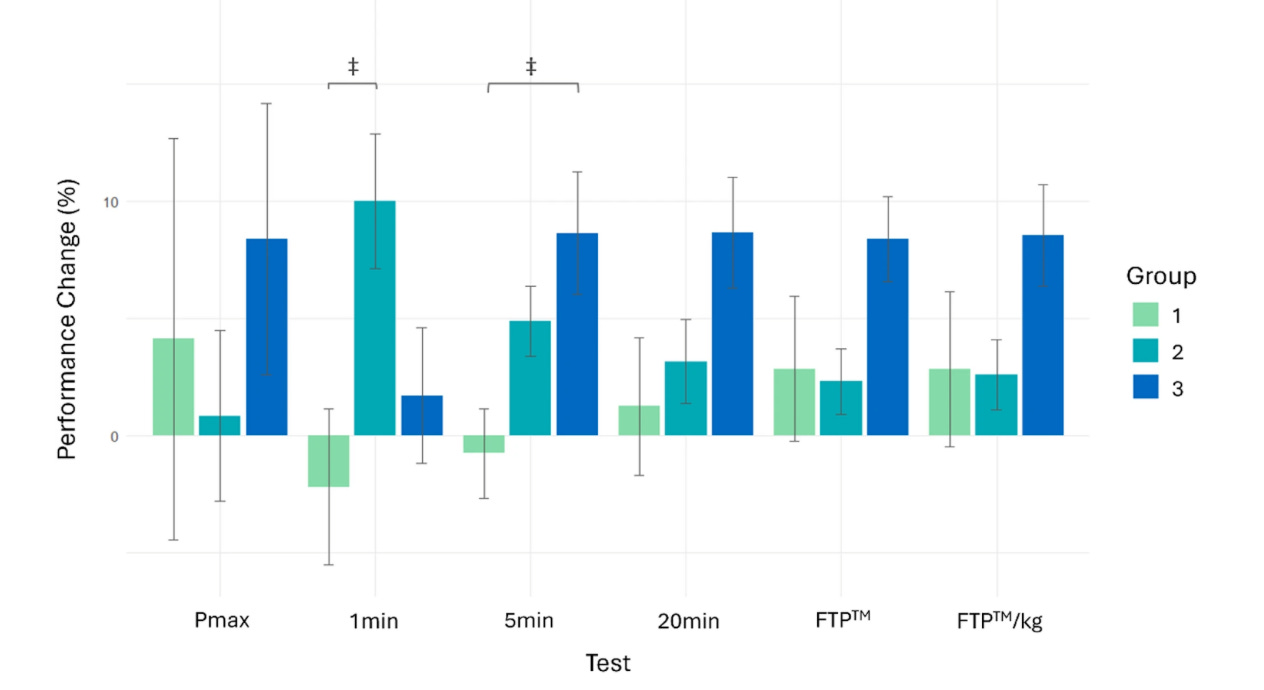The Coaching Professor: HRV + Resting HR + Well-Being: The Trio Powering Smarter Training
|
Hello Reader You can now train with the same science-backed readiness system just validated in Scientific Reports. By tracking HRV, resting heart rate, and well-being together, Athletica helps you know when to push, when to hold, and when to rest—just like the world’s best endurance labs. That’s exactly the readiness triad we’ve been operationalising in Athletica for years, built on Dan Plews’ PhD work and a long line of studies showing how autonomic markers and subjective status can steer daily training decisions. What the study did—quickly:
Each morning, athletes logged vmHRV and WB; some also captured RHR. The program told them whether to go High, Low, or Rest that day. Pre-/post- tests covered Pmax, 1-, 5-, and 20-min power.
How this maps to Athletica (and why we’ve gone this way)From Dan Plews’ early investigations with HRV in elite endurance athletes, our stance has been simple: use autonomic signals and athlete perception to time the work. In Athletica today:
And crucially, as explained, our AI-Coach does not change your training load (yet). It advises. You’ll see clear, LLM-generated guidance—progress/push, use caution, or prioritise rest/recovery—that mirrors the study’s “High/Low/Rest” logic. Athletes and coaches remain in charge; the system provides context so decisions are made with fewer blind spots. This advice-first approach is intentional. Adjusting load mechanically without athlete context risks eroding trust and missing nuance (travel, illness, life stress). Advisory intelligence lets you learn your own patterns while still benefiting from the science.
The physiology (in one paragraph)vmHRV (typically RMSSD) reflects cardiac vagal modulation—the parasympathetic “recovery” arm. It’s sensitive to accumulated stress and adaptation. Resting HR trends help disambiguate HRV shifts (and reduce mathematical bias tied to average HR). Well-being captures the non-physiology noise and the “how do I actually feel?” signal that often precedes performance changes. The trio forms a cross-check: if all agree, green light; if they diverge, adjust intent and execution. What coaches should do with this (today)
Reflect weekly: readiness trends + session outcomes beat any single metric. The learning loop is where you improve decision-making. Closing noteIt’s gratifying to see rigorous work land on what many coaches have felt and we’ve engineered toward: readiness is multimodal, and context is everything. The new paper confirms it in cyclists; Athletica puts it in your hands—every day—without adding complexity. Take a beat each morning, listen to your signals, and let the hard days count. Best, Paul Paul Laursen, PhD |
Athletica AI Coach and Training Science
Smarter training starts here. Athletica’s newsletters deliver science-backed insights, expert tips, and AI-powered training updates for endurance athletes of all levels. Catch up on past editions and subscribe to stay ahead in your training journey.
Train Smarter by Feeling First: Why We Built Athletica U “Don’t ever prescribe something to an athlete you haven’t felt yourself.” That line hit me hard the first time I heard it. I can still remember sitting in my office at High Performance Sport New Zealand, listening to sprint kayak coach Gordon Walker say those words. He wasn’t quoting science.He wasn’t reciting a textbook. He was laying out a coaching truth that would shape my entire philosophy moving forward. And he was absolutely...
Hello Reader, On May 19, 2021 I published a simple piece: “Why Athletica.” It laid out a hope. That science, thoughtfully encoded, could help everyday athletes train well, stay healthy, and perform. Today that hope feels a little surreal. Luke Evans, a Toronto-based engineer who started triathlon five years ago, recently used Athletica to self-coach his way to the overall win at IRONMAN Canada–Ottawa (8:40:22). Below are the podcast, the deep-dive blog, and the principles behind the...
Apple Watch, Meet Athletica! Starting today, you can use your Apple Watch with Watchletic 3.0 and have your workouts, sleep, resting heart rate, and HRV flow into Athletica - powering your readiness and adaptive planning. What you get Frictionless data in: Apple Watch → Watchletic → Athletica Better daily decisions: Your recovery metrics help shape tomorrow's plan. On-watch training: Watchletic gives you structured intervals and cues on Apple Watch. On-time setup (2-3 minutes) Install/Update...


